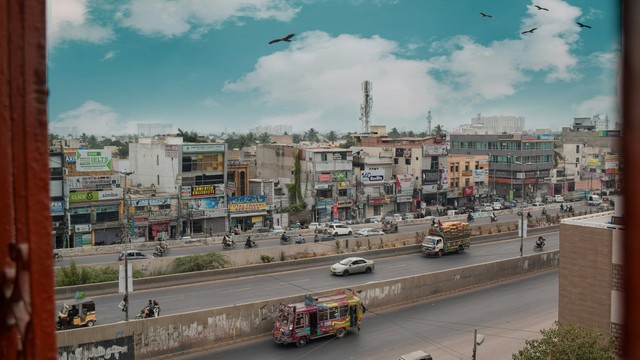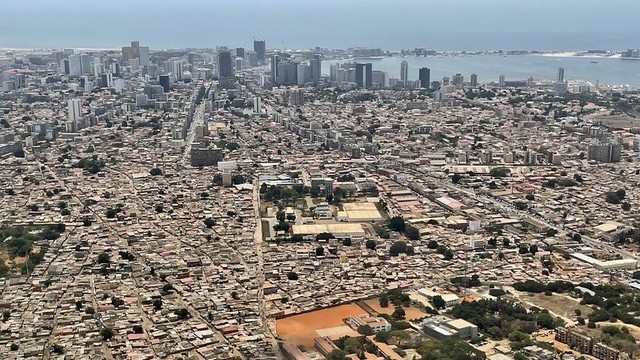Burgeoning growth of deltaic cities puts lives and livelihoods at risk
New data shows how city development in the world’s major deltas desperately needs effective and equitable planning to mitigate future climate-related catastrophes.


Suzhou is a major city located in the southeast of Jiangsu province in Eastern China, adjacent to Shanghai (Photo: chrisUK via Flickr, CC BY-NC-ND 2.0 DEED)
It is difficult to tell where the hazards of climate change will hit hardest, but low-lying deltas and their growing urban populations are contenders. Already vulnerable to climate-induced sea level rise and storm surges, the heavily-settled deltas are also prone to subsidence – amplifying the risks.
The results presented show for the first time that the world’s major deltas are not only densely settled and built-up, but have been experiencing especially high population growth in recent decades – as well as urbanisation rates twice that of other coastal and non-coastal areas.
In short, hundreds of millions of people are already concentrated in hazard-prone deltaic areas, and both the hazards and the concentrations of people and property have been growing.
Unfortunately, it is in the nature of urbanisation that these demographic and developmental trends will be hard to reverse, and especially hard to do so equitably. This does not augur well for adaptation to climate change, unless planning for cities can become far more effective and democratic than it now is.
What the numbers are telling us
This blog draws on the most comprehensive global dataset so far on settlement patterns in (and out of) coastally contiguous deltaic areas under 10 metres in elevation. These are known as low elevation coastal zones (LECZs), or more specifically LECZ10.
As shown in the graph, the global average population density in the deltaic LECZ10 is over 600 people per square kilometre. This is comparable to that in sprawling urban areas, and is much higher than outside these areas. With only 0.4% of the world’s land, the deltaic LECZ10 accounts for about 4% of its population (279 million people) and 3% of its built-up area (23,000 km2).
Its population and built-up area have also been growing extremely fast. This has meant that between 1990 and 2015 the deltaic LECZ10 experienced an average increase of 218 people per km2, compared to an increase of only 14 people per km2 outside this zone.
Global densities and population outside LECZ10 and in and out of deltaic areas of LECZ10, 2015.
Built-up area outside LECZ10 and in and out of deltaic areas of LECZ10, 2015.
A closer look at Asia
Asia dominates the global statistics with far higher population and built-up densities across the board, and population reaching an average density of over 1,000 people per km2 in its deltaic LECZ10.
As a result, although Asia contains less than half the world’s deltaic LECZ10, it contains 85% of the world’s population living in the deltaic LECZ10, and 83% of the built-up land. And between 1990 and 2015 Asia’s population increase per km2 of deltaic LECZ10 was 375 people.
Eastern Asia (where China dominates) is the stand-out region of Asia, while Africa is the stand-out region in the rest of the world.
The deltaic LECZ10 of Eastern Asia, however, has extremely high population densities but is especially striking in its built-up densities and growth rates, while Africa is only dominant outside Asia, and only as regards population (Africa’s proportion of built-up area may be low because of low average per capita income).
The uneven spatial distribution of low elevation deltaic populations also applies, with one or two countries accounting for the majority of the deltaic LECZ10 population in each major region.
Hazards increase while geographical advantages decline
Deltas have long been attractive, if hazardous, places to live, but looking to the future their historic, locational attractions are declining while hazards are growing. Modern deltaic cities are far less dependent on the natural geography of their deltas than cities of old.
Modern urban economics suggests that the location of cities is very ‘path dependent’. The simple fact that there are cities in deltas can make them attractive places to invest in, or move to.
But urban development can destroy rich and diverse deltaic ecosystems, fertile soils and natural flood controls. It can also deplete groundwater aquifers, compounding deltaic subsidence and amplifying relative sea level rise.
The importance of urbanisation
Delta development is synonymous with urbanisation. The proportion of land covered by cities is about 20 times higher in the deltaic LECZ10 than outside it. Between 1990 and 2015 city population growth in the deltaic LECZ10 was still over 3% a year, compared with less than 2% outside. Asia, most notably China, is central to these patterns.
Given the growing hazards, and in particular the cities at risk, there are calls for large investments in barriers to protect deltas. But these can attract more development, and often strategies for financing such infrastructure projects actively encourage urban development as a means of underwriting private-public partnerships, or increasing tax revenues.
Participatory planning, not risky development
To ensure measures to achieve short-term protection do not exacerbate future crises it’s important to take a long-term, precautionary approach. This will be easier if development pressures are relaxed, and climate change itself is mitigated.
Uncertainties about the severity of hazards in the deltaic LECZ10, and the fact that the most severe are expected to be some way in the future, complicate the politics of efforts to curb, let alone reverse, rapid urban development.
Even in places when coastal disasters have occurred, the tendency is to build back – one of the reasons researchers have argued that coastal urban development can lock-in undesirable levels of risk.
On the other hand, it should be easier to reverse policies actively encouraging deltaic development – suggested by China’s economic model (see box below). Much of the rapid coastal development in the world between 1990 and 2015 was probably rooted in largely incidental aspects of the economic growth strategy.
More generally, improvements in the efficacy and equity of planning for current and future cities could provide a far better basis for both negotiating the right forms of protection, and applying the right brakes to risky development.
Deborah Balk (Baruch College, New York), Matthew Heaton (Center for International Earth Science Information Network, CIESIN), Hasim Engin (CIESIN) and Kytt MacManus (CIESIN) contributed to this blog.
About the author




